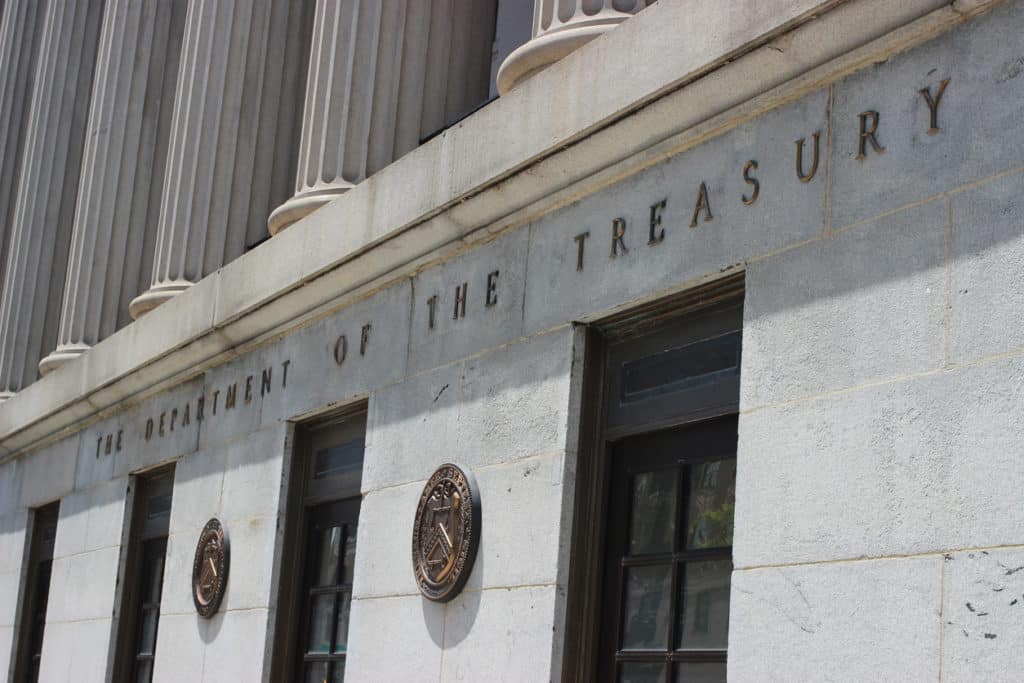

BlackRock launched its first tokenized fund in March this year and it has gathered more than $500m in record time, indicating demand for yield from investors with on-chain capital.
The traditional fund manager launched its BlackRock USD Institutional Digital Liquidity Fund (BUIDL), on the ethereum blockchain on 20 March this year, in partnership with Securitize, the digital asset securities firm. Qualified investors can earn US Treasury yields through BUIDL, and interest is distributed on chain directly into investors’ wallets.
Carlos Domingo, founder and chief executive of Securitize, said:
The @securitize's market team did this nice infographic to show how much the tokenized treasury market has grown in the last two years and how BUIDL has overtaken it in the previous few months https://t.co/gximmzUf4B
— Carlos Domingo (@carlosdomingo) July 10, 2024
BlackRock USD Institutional Digital Liquidity fund (BUIDL) has surpassed $500 million in market value, making it the highest-valued tokenized treasury fund in the world.
Securitize CEO Carlos Domingo discusses why it has been so successful https://t.co/WheOpp7xJC pic.twitter.com/g6LIFguqPi
— Bloomberg TV (@BloombergTV) July 9, 2024
Consultancy McKinsey said in a blog in June this year that tokenized money market funds have attracted more than $1bn in assets under management, with funds available from both traditional fund managers and digital natives such as natives such as Ondo Finance, Superstate and Maple Finance.
“Tokenized money market funds will likely see sustained demand in a higher-interest-rate environment, potentially offsetting stablecoins as on-chain stores of value,” added McKinsey. “Other types of mutual funds and ETFs could offer on-chain capital diversification to conventional financial instruments.”
Crypto exchange Coinbase said in its The State of Crypto report in June that the tokenized asset market is expected to hit $16 trillion by 2030.
“Government securities are driving real-world asset tokenization, and are the only asset class where prominent US brands – led by BlackRock and Franklin Templeton – are tokenizing,” said Coinbase. “Recent high interest rates have boosted demand for safe, high-yielding T-bills onchain, sending the value of tokenized US Treasury products over 1,000% from January 2023, to $1.29bn as of May 31, 2024.”
Although overall demand for tokenized money market funds is partly dependent on the interest rate environment, McKinsey said the demand now acts as the “early green shoots of traction” for other funds.
Tom Wan, research analyst at digital asset ETF issuer 21Shares, was at Goldman Sachs’ Digital Assets Conference in June, which included a panel with Tony Ashraf, managing director at Blackrock with global responsibility for digital asset transformation.
5.1 Why Tokenized Money Market Fund is Important to Crypto
– Yield-bearing asset is a high-quality collateral asset
– Stablecoin has no yield and might have potential counterparty risk
– More efficient asset than using cash with no yield— Tom Wan (@tomwanhh) June 28, 2024
5.3 What Strategic Investment did your firm Make?
Russell at Abrdn:
– Infrastructure for 24/7 Trading
– Work closely with @hedera, run a ndoe and participate in the governance councilGeoff at SCB:
– Zodia CustodyTony at Blackrock:
– Blackrock invest in companies that can…— Tom Wan (@tomwanhh) June 28, 2024
Benefits of on-chain funds
McKinsey also highlighted that the benefits of on-chain funds include instant 24/7 settlement and the ability to use tokenized funds as payment vehicles or collateral. Having data on a shared ledger also reduces errors associated with manual reconciliation, and increases transparency, leading to lower operational and technology costs.
In June this year FalconX, a digital assets prime brokerage, said in a blog that it executed the first trade using the USTB token, Superstate’s short-term treasury fund, as collateral. Superstate launched its first tokenized fund, USTB, in February this year. FalconX also accepts BUIDL as collateral.
“That step, along with our trade using USTB as collateral, are early signs that tokenization of treasury funds is creating value to market participants by blending the stability and liquidity of traditional markets with the agility and innovation possible with blockchain technology,” added the blog.
The blog highlighted that fund managers can earn a yield on their on-chain cash holdings by using USTB as collateral and the party posting the collateral in the trade is also able to earn interest on the USTB, in addition to any potential returns from the trade itself.
“This contrasts with using USDC or fiat as collateral, where often no interest is earned,” added the blog. “We’re proud to be at the forefront of this revolution, helping investors optimize their capital efficiency and returns.
Goldman Sachs
Goldman Sachs is aiming to launch three tokenization projects by the end of the year according to Fortune magazine.
Matthew McDermott, global head of digital assets at Goldman Sachs, told the magazine that the tokenization projects include one that is related to US funds and another related to European debt issuance.
McDermott also said in the piece that while tokenized funds from BlackRock and Franklin Templeton target retail investors, Goldman Sachs will target institutions. In addition, the bank is required to use a private permissioned chain for regulatory reasons, while the fund managers have used public chains.
Jenny Johnson, chief executive of Franklin Templeton, has said it is important that the firm’s tokenized money market fund runs on a public rather than a private blockchain.
Franklin Templeton launched a tokenized money market fund in 2021, after working with the US Securities and Exchange Commission for approval. The Franklin OnChain U.S. Government Money Fund invests at least 99.5% of its total assets in government securities, cash and repurchase agreements collateralized fully by government securities or cash. Each share of the fund is represented by a BENJI token and the fund’s transfer agent maintains the ledger of share ownership using blockchain technology to record transaction activity.
Johnson spoke at the Consensus 2024 conference in May and said the manager shadowed the public blockchain for the first six months. The SEC then got comfortable enough to allow the fund to run on the public blockchain. Running the fund on a blockchain allows yield to be paid intraday. If holders sell a token in the middle of the day, they earn yield for a number of hours and the buyer receives the rest.
“That is not available unless you are on the public chain, because that is how precise it is,” she added. “We view this as being a way to deliver traditional assets and being able to create exposures to traditional ETFs in the market that can be held in a digital wallet.”
As a result of having a tokenized fund, Franklin Templeton started to buy blockchain loans on-chain and became a node validator. Nodes can create, send, and receive blockchain data they validate, record, and broadcast each transaction on the network. Franklin Templeton now runs 30 nodes on 12 different chains.
“If you are not participating in this system and seeing the visibility in transactions, you will have a hard time providing investment advice,” said Johnson. “You are at such a disadvantage by not being a node validator.”









